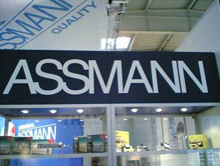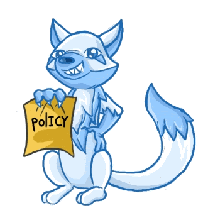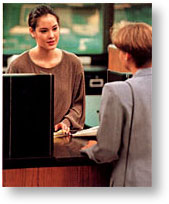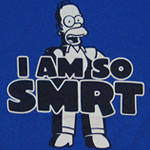 PICTURE THIS: You meet someone at a networking event. He’s friendly, approachable, asks great questions; even introduces you to a few his colleagues.
PICTURE THIS: You meet someone at a networking event. He’s friendly, approachable, asks great questions; even introduces you to a few his colleagues.
After the event you exchange business cards.
A few days later he follows up with a quick email, thanking you for coming. He also offers an open-ended invitation to a future lunch to brainstorm and get to know each other better.
Wow!
Still, in the back of your mind, you can’t help but wonder, “Why is he being so nice to me?”
Does he have ulterior motives?
Does he want to sell me something?
Does he think I’m going to become his best friend?
Oris he just nice to everyone?
All of these are possibilities. And it’s human nature to be suspicious of people’s motives. Especially when it appears someone has no apparent reason to be so “nice” to you.
PERFECT EXAMPLE: ever since my 20/20 piece, I’ve been getting SWAMPED with phone calls and emails.
Most are from people who are just nice.
Many are from people who are nice AND want to connect.
However, some are from people are very nice … who want me to become part of their downline. Or read their business proposal. Or buy their products and services.
Yeah.
So, based on my experience of wearing a nametag 24-7 for the past 2,430 days, I believe there are three levels of niceness:
1. ULTERIOR MOTIVES: they seek sales, referrals, joining their organization, becoming a part of their MLM company.
2, ANCILLARY MOTIVES: they seek to develop and maintain mutually valuable relationships. “Who knows?” they think, “Maybe somewhere down the line we’ll be able to help each other!”
3. ZERO MOTIVES: they seek to be nice for the sake of being nice. No scorekeeping. No objective. Just being nice.
The challenge is, the word “nice” is a toughie. And there’s a paradox of meaning when you research the word’s origin.
By definition, the word nice means, “Pleasing and agreeable in nature,” “Having a pleasant or attractive appearance,” “Exhibiting courtesy and politeness,” and “Of good character and reputation; respectable.”
Conversely, the Latin derivative for nice is nescius, or “ignorant.”
Interesting.
No wonder “nice” is so misunderstood!
Still, when it comes to approachability, it’s important to see the value in all three types of conversation levels. None are better than the other; they just serve different purposes.
So, next time someone’s “nice” actions appear suspicious; and you ask yourself, “Why are they being so nice to me?” remember these three variations of niceness before you write someone off.
LET ME ASK YA THIS…
Why are some people so nice?
LET ME SUGGEST THIS…
Share your best “Why are you being so nice to me?” story here!
* * * *
Scott Ginsberg
That Guy with the Nametag
www.hellomynameisscott.com
 Are you the luckiest person you know?
Are you the luckiest person you know?
Watch Scott’s interview on 20/20!

 Talking makes you think.
Talking makes you think. * * * *
* * * * The cashier swiped my credit card.
The cashier swiped my credit card. * * * *
* * * * The other day I got a phone call from a guy who wanted me to join his association.
The other day I got a phone call from a guy who wanted me to join his association. What three words do your customers NEVER want to hear?
What three words do your customers NEVER want to hear? The other day I (thought) I was having an epiphany:
The other day I (thought) I was having an epiphany:  Let’s say a customer comes to you with a complaint.
Let’s say a customer comes to you with a complaint. S is for SURPRISE.
S is for SURPRISE. S is for SORRY.
S is for SORRY.  T is for THAT’S.
T is for THAT’S.  O is for OFFERING.
O is for OFFERING.  P is for PROMISE.
P is for PROMISE.  Imagine you’re waiting in line at the airport.
Imagine you’re waiting in line at the airport. Over the years I’ve had so many lunches with so many people, I can’t even keep them straight.
Over the years I’ve had so many lunches with so many people, I can’t even keep them straight.  Confident communication comes from winning small victories first. Here are 4 techniques to help you gain the edge…
Confident communication comes from winning small victories first. Here are 4 techniques to help you gain the edge…